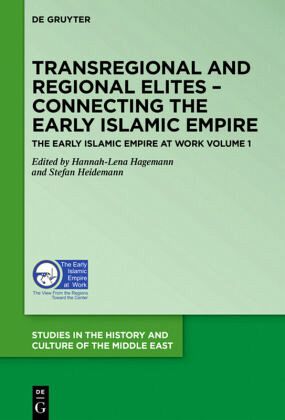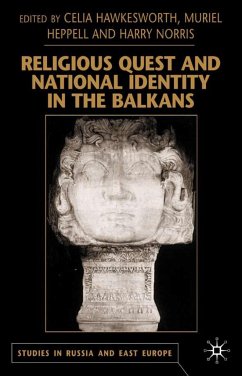
The Early Islamic Empire at Work, Transregional and Regional Elites - Connecting the Early Islamic Empire
Versandkostenfrei!
Versandfertig in 1-2 Wochen
90,99 €
inkl. MwSt.

PAYBACK Punkte
45 °P sammeln!
Transregional and regional elites of various backgrounds were essential for the integration of diverse regions into the early Islamic Empire, from Central Asia to North Africa. This volume is an important contribution to the conceptualization of the largest empire of Late Antiquity. While previous studies used Iraq as the paradigm for the entire empire, this volume looks at diverse regions instead. After a theoretical introduction to the concept of 'elites' in an early Islamic context, the papers focus on elite structures and networks within selected regions of the Empire (Transoxiana, Khurasa...
Transregional and regional elites of various backgrounds were essential for the integration of diverse regions into the early Islamic Empire, from Central Asia to North Africa. This volume is an important contribution to the conceptualization of the largest empire of Late Antiquity. While previous studies used Iraq as the paradigm for the entire empire, this volume looks at diverse regions instead. After a theoretical introduction to the concept of 'elites' in an early Islamic context, the papers focus on elite structures and networks within selected regions of the Empire (Transoxiana, Khurasan, Armenia, Fars, Iraq, al-Jazira, Syria, Egypt, and Ifriqiya). The papers analyze elite groups across social, religious, geographical, and professional boundaries.
Although each region appears unique at first glance, based on their heterogeneous surviving sources, its physical geography, and its indigenous population and elites, the studies show that they shared certain patterns of governance and interaction, and that this was an important factor for the success of the largest empire of Late Antiquity.
Although each region appears unique at first glance, based on their heterogeneous surviving sources, its physical geography, and its indigenous population and elites, the studies show that they shared certain patterns of governance and interaction, and that this was an important factor for the success of the largest empire of Late Antiquity.














